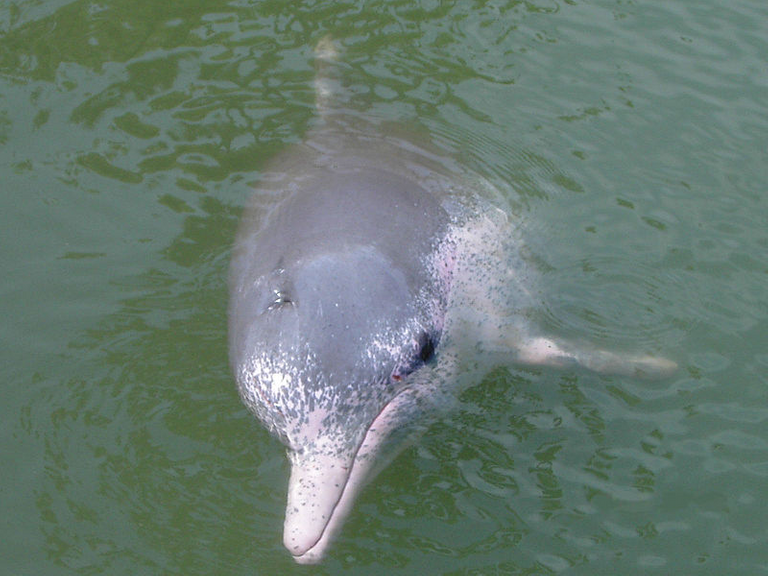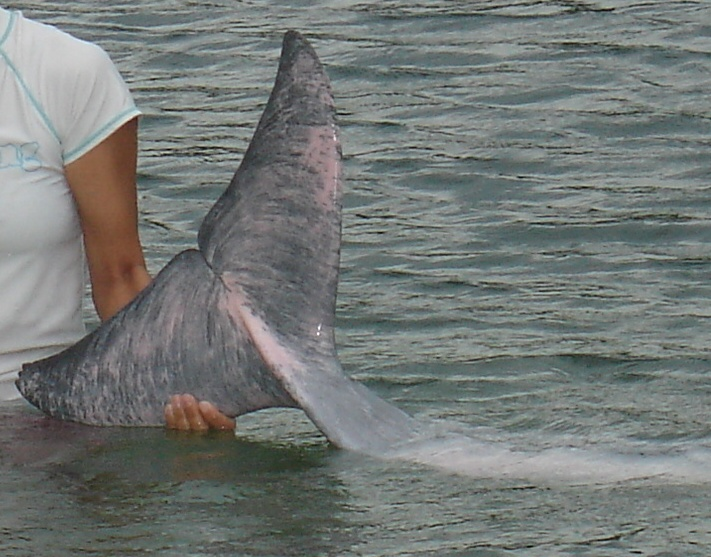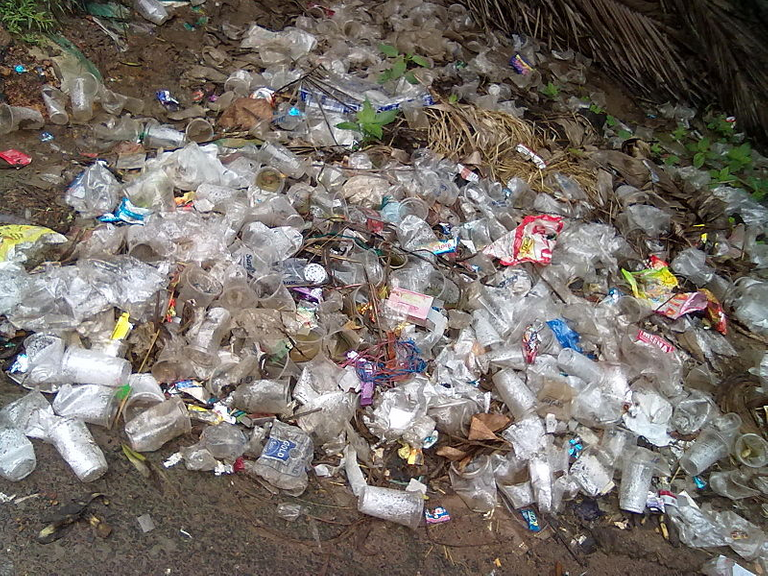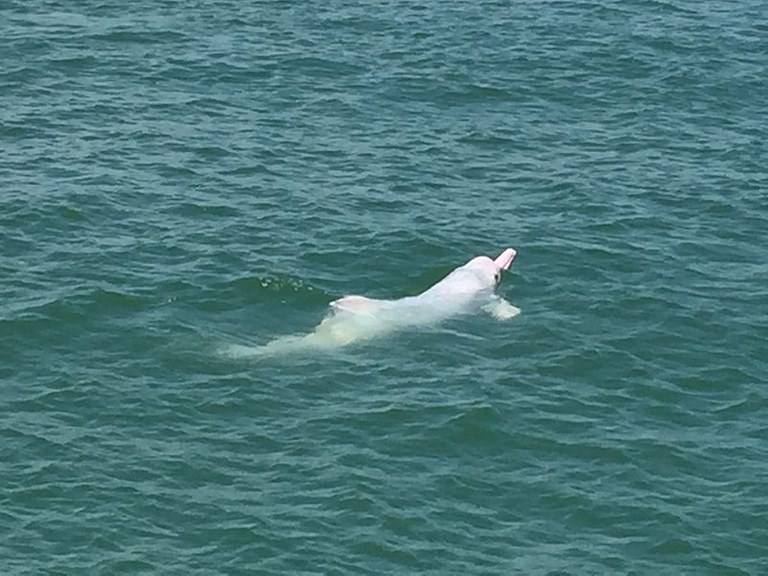Losing more species: The humpback dolphin at risk of extincion!
Hi @Hive Community!
I hope that you are having moments of productivity in your houses due to the contingency we are going through, #stayathome. You know it is hard work and it takes many hours of work to bring quality content to Hive. I hope to meet this goal today😃
And... yep, bad news about dolphins species☹️🐬
A scientific article by Songhai Li (Marine Mammal and Marine Bioacoustics Laboratory, Sanya, China).
The genus of humpback dolphins (Sousa spp.) Was recently revised and has four species: S. teuszii, S. plumbea, S. chinensis and S. sahulensis (1). These four species appear within the Convention on International Trade in Endangered Species of Wild Fauna and Flora (CITES)(2). The S. chinensis and S. sahulensis species are classified as Vulnerable on the International Conservation Union (IUCN) Red List, S. plumbea is in the "endangered" category and S. teuszii is critically endangered! (3. 4).

Photo by Takoradee
The humpback dolphin and its shallow habitats, the coastal waters of the eastern Atlantic, the Indian Oceans and the western Pacific are threatened by illegal fishing, boats, degradation and destruction of where they live, environmental pollution and the depletion of their food, which puts humpback dolphins in danger of extinction. (4–7).
Intervention at the national and international levels is urgently needed.

Photo by Zureks
Environmental pollution and human activities affect humpback dolphins in their habitat. High levels of organochlorines (derivatives generally harmful to human and animal health) were found in the fat of humpback dolphins in China and South Africa (8, 9). Excessive dredging, drilling, land reclamation, construction, boat traffic, mining and coastal development projects focus on humpback dolphin habitat and threaten their survival in Africa, India, Southeast China and the northern Australia (4, 7, 9, 10).

Photo by Venkat2336 "Plastic waste: Large build-ups like this can interfere with echolocation"
Preserving humpback dolphins, a charismatic megafauna and valuable genetic resource, is of reelevance to near-shore marine biodiversity! (4). But, in resource-poor countries, dolphin populations receive little scientific study and management attention (4). Even in the territories of well-developed nations, such as Australia, China, and South Africa, state and local governments have failed to provide adequate protection for humpback dolphins to prevent population decline and therefore preservation (4, 7, 10).

Photo by Leonard Reback
The conservation status and risk factors of this species must be thoroughly known to guarantee the safety of humpback dolphins, as well as subspecies and populations. The governments of the countries that host humpback dolphins must also take urgent measures to support the extensive and substantive national and international intervention mentioned above, to establish conservation actions, help coastal fishermen to expand their sources of income and decrease their dependence on the Fishing can be good examples, thus reducing threats to humpback dolphins and their habitats (Songhai, 2020).
What you think? Can we still save this species or is it too late?🙁

References
- T. A. Jefferson, H. R. Rosenbaum, Mar. Mamm. Sci. 30, 1494 (2014).
- CITES,Appendices I, II, and III (2019); https://cites.org/eng/app/appendices.php.
- “Humpback dolphin” search,The IUCN Red List of Threatened Species (2017);www.iucnredlist.org/search?query=humpback%20 dolphin&searchType=species.
- T. A. Jefferson, B. E. Curry, Adv. Mar. Biol. 72, 17 (2015).
- M. Liu et al., Anim. Conserv. 20, 182 (2017).
- S. Li et al., Integr. Zool. 13, 495 (2018).
- L. Karczmarski et al., Adv. Mar. Biol. 73, 27 (2016).
- D. Gui et al., Chemosphere 114, 106 (2014).
- T. Gill et al., Adv. Mar. Biol. 72, 119 (2015).
- G. J. Parra, D. Cagnazzi, Adv. Mar. Biol. 73, 157 (2016).